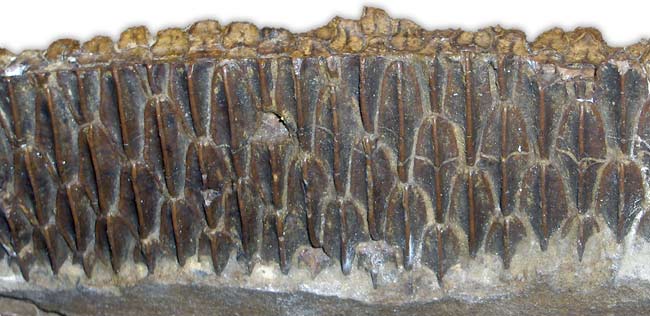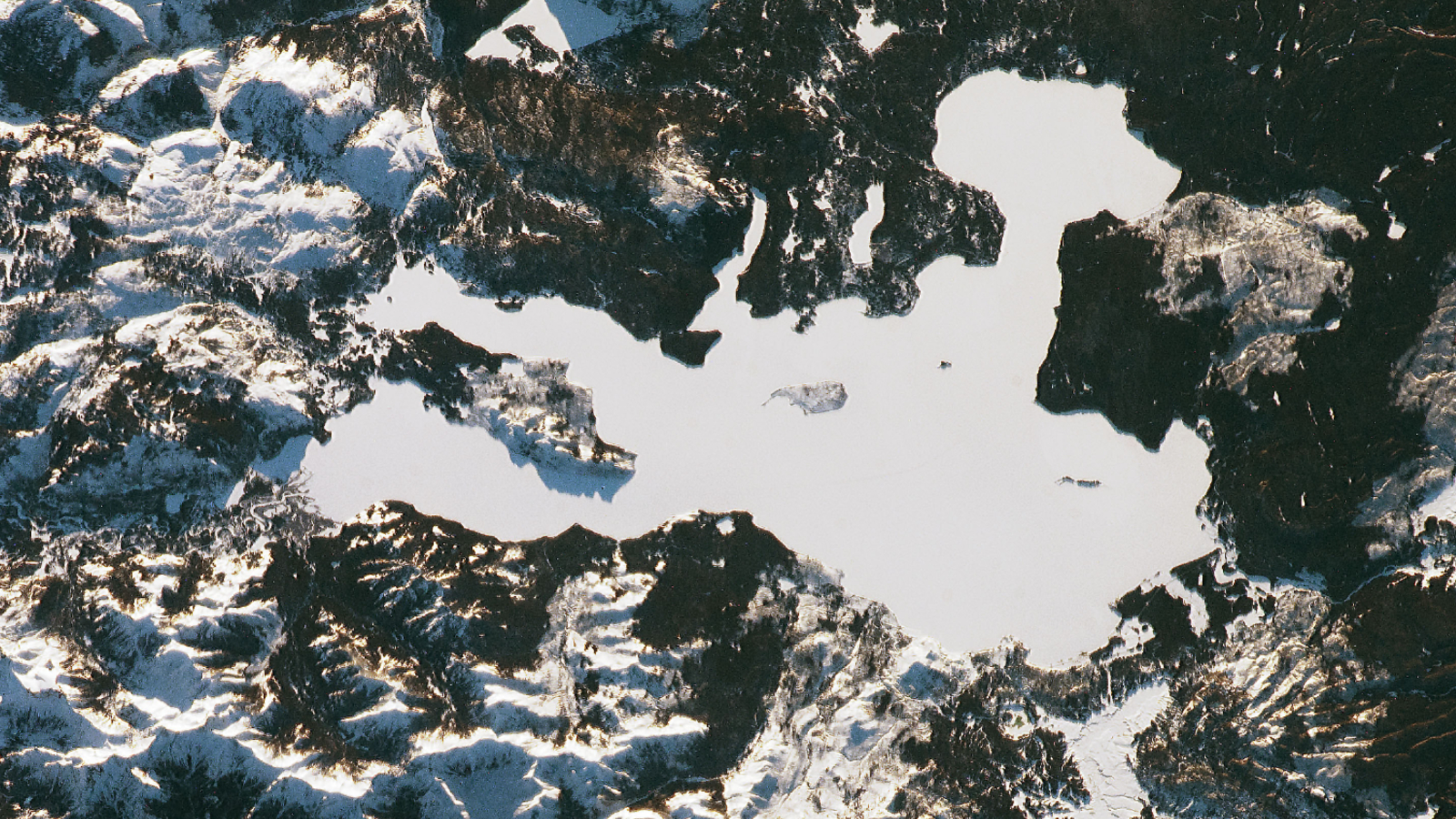Study Hints at What and How Dinosaurs Ate

A giant, plant-eating dinosaur had a wacky way of chewing. When Edmontosaurus chomped down, its top teeth would splay outward, sliding across the bottom teeth and grinding up its leafy meals, suggests a new study.
This chewing mechanics comes from an analysis of microscopic scratches left behind on the fossilized teeth of Edmontosaurus, a duck-billed dinosaur that lived some 68 million to 65 million years ago, during the Cretaceous.
The results, which are published online this week in the early edition of the Proceedings of the National Academy of Sciences, also suggest the duck-billed dinosaur was munching on horsetails and other low-lying vegetation.
The researchers say this method of examining the tiny marks preserved on teeth could be used to infer what other dinosaurs ate — a riddle that can be tricky to solve, as researchers can't go back in time to watch the leviathans, and preserved stomach contents are rare.
Specifically, paleontologist Mark Purnell of the University of Leicester in England and his colleagues found four sets of striations oriented in different directions on the teeth of Edmontosaurus. The researchers say the scratches reveal that the movements of hadrosaur teeth were complex and involved up and down, sideways and front-to-back motion.
Until now, scientists were unsure of how the sideways motion was achieved.
Duck-billed dinosaurs lack they type of jaw joint found in mammals that allows us to slide our teeth in a side-to-side motion. A somewhat controversial theory had been proposed about 25 years ago suggesting such dinosaurs were equipped with a hinge between the upper jaw and the rest of the skull.
Get the world’s most fascinating discoveries delivered straight to your inbox.
"For millions of years, until their extinction at the end of the Cretaceous, duck-billed dinosaurs, or hadrosaurs, were the world's dominant herbivores," Purnell said. "They must have been able to break down their food somehow, but without the complex jaw joint of mammals they would not have been able to chew in the same way, and it is difficult to work out how they ate."
The new findings strongly support that hinged-jaw idea.
"This shows that hadrosaurs did chew, but in a completely different way to anything alive today," said study researcher Paul Barrett, a paleontologist at the Natural History Museum in London. "Rather than a flexible lower jaw joint, they had a hinge between the upper jaws and the rest of the skull. As they bit down on their food the upper jaws were forced outwards, flexing along this hinge so that the tooth surfaces slid sideways across each other, grinding and shredding food in the process."
But even with the dinosaur's upper-jaw teeth hinging outward, they could likely still chew with their mouths closed.
"The idea is that these things had cheeks, so as they chewed the outward flexure of the upper jaws might have been visible, but probably quite subtle," Purnell told LiveScience. "Certainly the outward movement would have been less than the upward movement of the lower jaws."
While the scratches told the scientists how the animal may have chewed, the lack of pit marks on the teeth suggested what the hadrosaur was eating. Living mammals that graze on low-lying vegetation lack such pits, and if this pit-mark relationship holds for dinoasurs, the researchers speculate Edmontosaurus ate horsetails, which were common at the time.
- Video - A Meal with the 'Leonardo' Dino
- Tiny Skull Sheds Light on Strange Dinosaur Diets
- Dinosaur News, Information and Images
Jeanna Bryner is managing editor of Scientific American. Previously she was editor in chief of Live Science and, prior to that, an editor at Scholastic's Science World magazine. Bryner has an English degree from Salisbury University, a master's degree in biogeochemistry and environmental sciences from the University of Maryland and a graduate science journalism degree from New York University. She has worked as a biologist in Florida, where she monitored wetlands and did field surveys for endangered species, including the gorgeous Florida Scrub Jay. She also received an ocean sciences journalism fellowship from the Woods Hole Oceanographic Institution. She is a firm believer that science is for everyone and that just about everything can be viewed through the lens of science.


